Expert's Rating
Pros
- Driver aids and parking mode
- Handsome design
- Easy phone connectivity
- Good 1440p front captures
Cons
- 1080p Rear captures lack detail
- Lots of wires with non-standard connectors
Our Verdict
The Thinkware Q200 is a good front/rear dash cam combo, but at the price we’d like to see great, not just good captures.
Best Prices Today: Thinkware Q200 dash cam
Thinkware has brought a number of innovations to the dash cam market, such as driver aids and phone connectivity. The Q200 reviewed here, features those handy extras, but it’s a bit pricey for external GPS and the cam’s capture quality, which is good, but not the best we’ve seen.
Further reading: See our roundup of the best dash cams to learn about competing products.
What are the Thinkware Q200’s features?
The Thinkware Q200 is a $200 two-channel, front/rear dash cam combo that carries on with the company’s phone-centric tradition. In other words, settings are done via an app on your phone. This makes for a cleaner appearance (minimal buttons), but also means you need your phone handy. The front camera is 1440p (Omnivision OS04C20), while the rear is 1080p (HK Optical HK-8308J-009-1-M12-PT). Both have a 125 degree field of view.
The front camera is rectangular, measuring approximately 3.9-inches long by 0.9-inched thick by 1.3-inches tall, and styled in dark silver and black. The front of the is home to the short lens neck, while the rear is occupied by the record on/off and Wi-Fi buttons as well as their status lights.
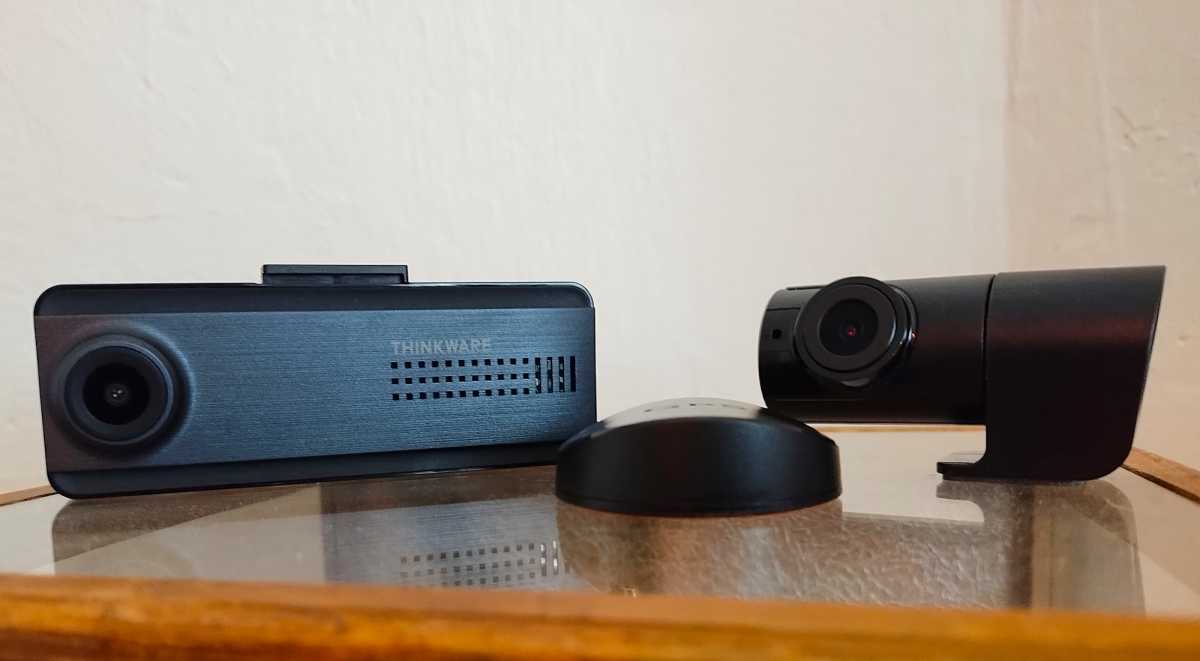
The right side of the unit offers only venting, while the left has the jacks for the rear camera and GPS. The power jack is on top of the unit to which attaches a proprietary 3.5mm TS (Tip/Sleeve) cable with a captive auxiliary power adapter. Generally speaking, we prefer Type-C to Type-A cables with a separate auxiliary adapter, ideally featuring two ports so you can power or charge another device simultaneously.
The rear camera rotates vertically, 360 degrees, and connects to the front camera via a 20-foot cable featuring TRRS (Tip/Ring/Ring/Sleeve) 3.5mm plugs. This cable is thinner and more pliable than most, which is nice for maneuvering.
Both the front and rear cameras use semi-permanent adhesive mounts, and the front slides off for safekeeping. The rear camera is not made to be removable, however — inadvertently tugging too hard had it popping out. I wouldn’t recommend doing this on a regular basis, as the retaining grooves will likely bust or wear out eventually. But in a pinch….
I mentioned the GPS jack. While the Q200 features GPS, it’s implemented by way of a rather large external unit (shown in the picture above) that must also be affixed to the windshield. Along with the rear camera, this makes for quite a nest of wires, not to mention adding to any blind spot the dash cam creates. To limit this blind spot, take a read through our dash cam installation guide.
Thinkware was one of the first companies to provide bad-driver aids such as collision warnings, lane departure, traffic camera alerts (safety cameras, my patootie!), etc. These are of course, present in the Q200 and you can hear various beeps and alerts if you enable the functions. While I turn off the bad-driver aids, I do like the traffic and speed camera alerts. Don’t ask.
Alas, unlike some of Thinkware’s products, the Q200 doesn’t respond to voice commands. Why, I can’t say, but with no display, they would be very handy.
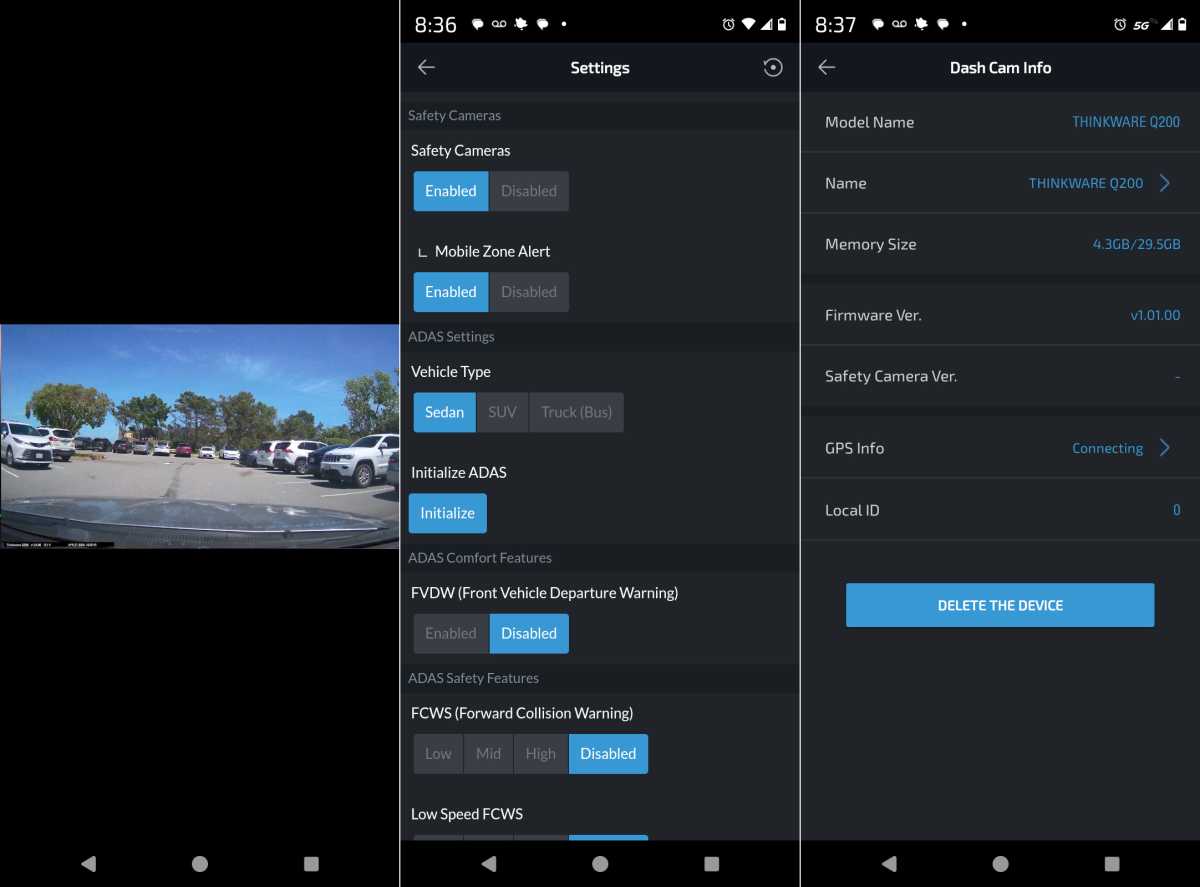
Of course, there’s the phone app, Dash Cam Link (see above). Thinkware saves you the hassle of entering a Wi-Fi password by connecting via Bluetooth, then switching to Wi-Fi when you want to use the live view mode. Live view requires more bandwidth than Bluetooth provides, hence the Wi-Fi.
The app also allows you to easily adjust the time, date, and time zone as well as other settings. For some reason, it rates only 1.7 stars out of 5 on the Google Play Store, but that must reflect past issues or some anomalies that I didn’t experience. It was easy to use and worked perfectly in my testing.
Note that you must hit the “Dash Cam Registration” button to connect to the camera. Perhaps not the most intuitive initial instruction ever, but 1.7 stars? If you experience any issues, let me know.
How are the Thinkware Q200’s captures?
The Q200’s captures overall are average, with the best being the daylight front captures — par for the course. The rear captures were adequate, but somewhat lacking in detail during the day, and even weaker at night.
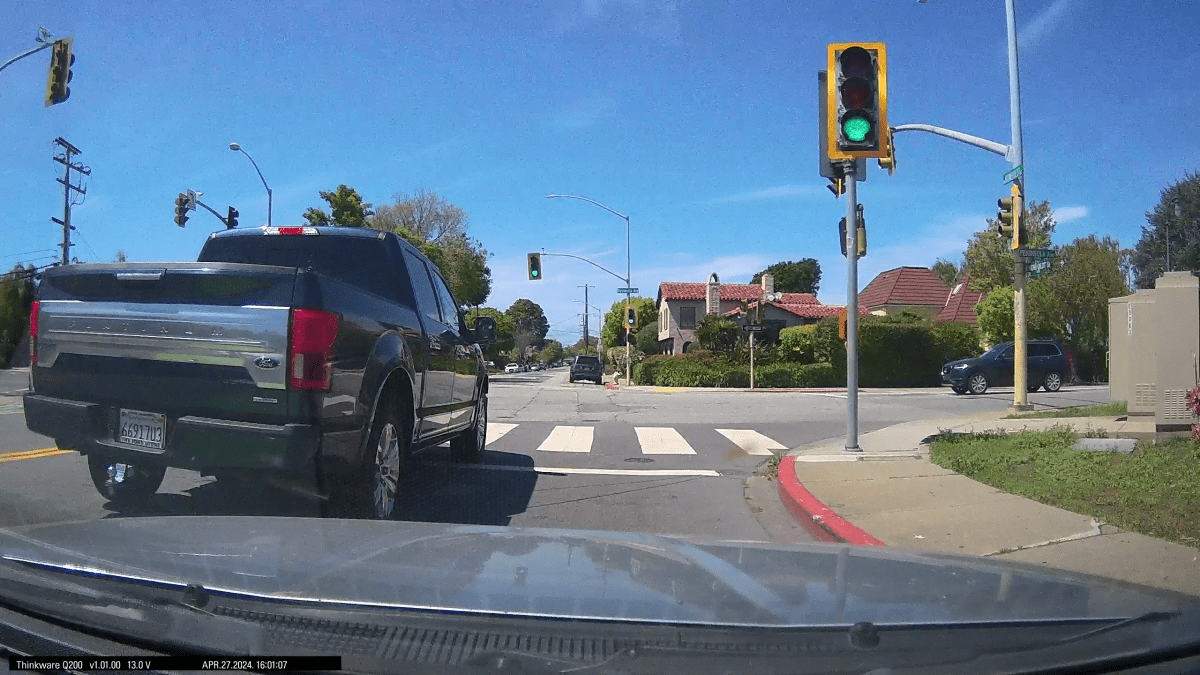
The low-light capture below isn’t full night; however, it is considerably darker than it appears in the image. Ambient light in the immediate area is essentially the same. Detail is good, and headlight flare is handled well by the Q200.

The rear captures sport rich colors, but detail isn’t particularly obvious as you can see from the license plate in the image below. There’s also a fair amount of fish-eye. Not bad, but not great.
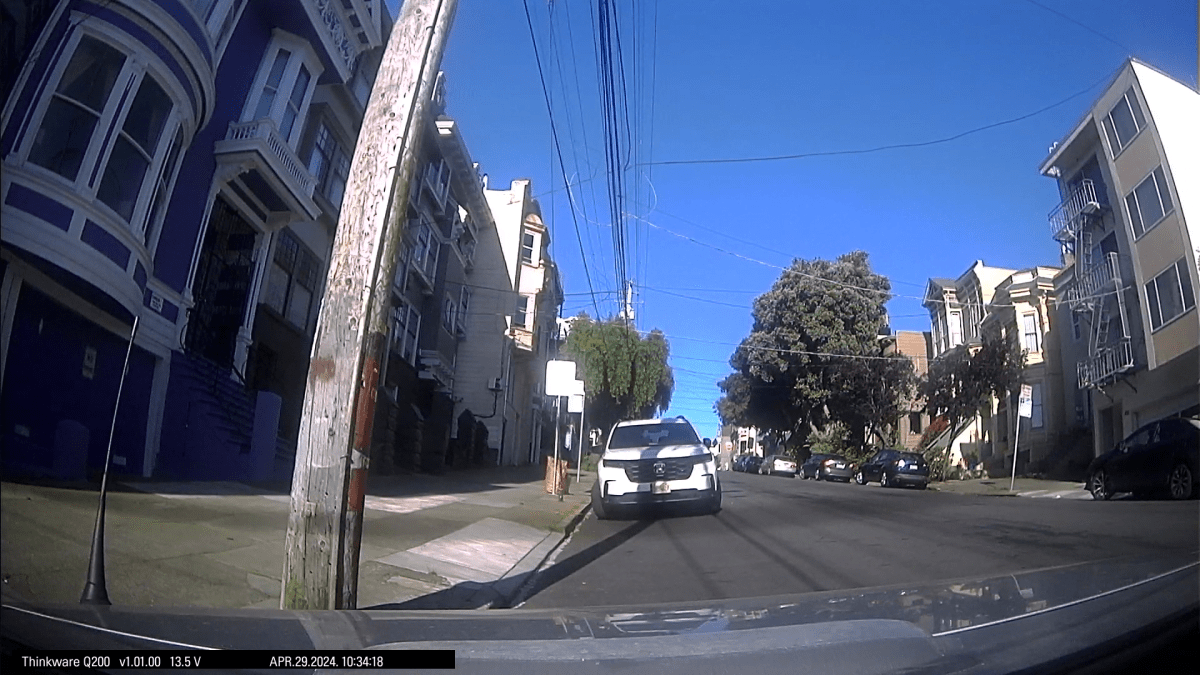
Again, at night (late evening really), the issue with the rear captures is detail. You’ll get the big picture on events, but likely not the license plate number.
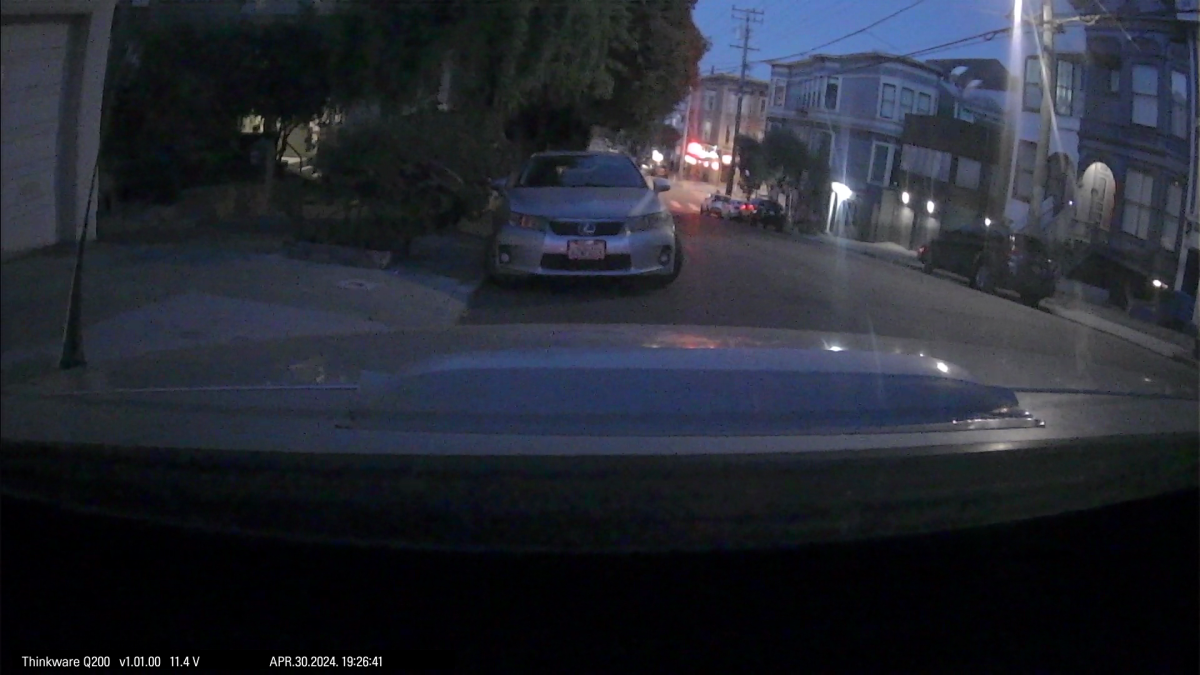
In total, the Thinkware Q200’s front captures are more than workable, while the rear camera’s will suffice, but could use improvement. I do wonder if some of the detail is being lost in compression. By default, the Q200’s 1440p generates only 127MB per minute, and the 1080p 70MB per minute. Most cameras will generate around 150MB per minute for 1440p.
A quick note on capture quality — it’s the result of a combination of resolution, optics, and processing. If any one of these is weak, quality suffers. By way of comparison, the 2160p from the recently reviewed Rove R2-4K was significantly worse than the Q200’s 1440p, while the 1440p from the upcoming Viofo VS1 Tiny 2K was quite a bit more detailed.
The upshot? Don’t buy on specs (especially resolution) alone; read the reviews and comments.
The Q200 employs a super capacitor to power the camera when the power is cut off. This allows the Q200 to save any recordings in progress, but it doesn’t run the camera long enough to capture any more action.
Should you buy the Thinkware Q200?
Though a bit pricey, the Thinkware Q200 is a good dash cam combo. For those who need or want them, the red light and speed camera alerts are the stand-out selling point. That said, we’d like to see internal rather than external GPS, and as there’s no display, voice control should also be included. Put it on the list, but shop around.




